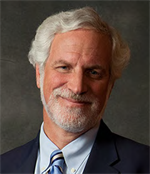Member Letters
 |
"Please know that many of my macular degeneration patients cannot afford the more expensive alternatives (Eylea and Lucentis) and will go blind without access to Avastin. Further, from a provider standpoint, caring for retina patients is already very costly due to the high cost of drugs, (primarily Eylea, and Lucentis). lf FDA guidelines now restrict my ability to use Avastin and force me to substitute Eylea or Lucentis, the total cost of caring for patients in my clinic will increase by 300% -- just by substituting a more expensive medication for a less expensive one. ln my view, this amounts to poor stewardship of healthcare dollars, given that NIH-funded, large, prospective, randomized, double blinded clinicaltrials (including CATT and DRCR Protocol T) show similar safety among the treatments, and similar efficacy (except in a small subset of patients identified above).” |
 |
“I believe the scientific evidence supports treating Avastin the same as other human drugs and allowing the establishment of longer BUDs based on product-specific sterility and stability testing. Moreover, by extending the BUDs, the FDA will allow repackagers to finalize sterility testing, which typically takes 14 days, before having to use the repackaged Avastin.”
|
 |
“I believe a one-size-fits-all approach to establishing beyond use dates (BUDs) is inappropriate and I encourage the FDA to allow outsourcing facilities to conduct product specific stability tests to extend the BUD beyond the default. This would allow the BUD to be established based on the scientific evidence, on a case-by-case basis for each biologic.”
|
 |
“In 2005, Avastin enabled 150,000 patients in this country to retain their vision at a very low cost. Since that time I have been using Avastin to treat the majority of my AMD patients. In 2014, my practice of 11 retina specialists administered 46,431 total anti-VEGF injections. Of those injections, 56 percent were Avastin and 22 percent were Lucentis and Eylea each. We had a total of 2 isolated cases of endophthalmitis associated with Lucentis and 2 with Eylea, yielding an infection rate of 0.0002 cases/injection for both drugs. Additionally we had a series of 4 cases from one lot of Eylea with marked inflammation that we reported to the manufacturer. For Avastin we had 3 isolated cases of endophthalmitis, resulting in an infection rate of 0.0001 cases/injection.”
|
 |
“While the FDA’s charge is first and foremost to ensure patient safety and efficacy of drug therapy, in the absence of clear cut data from numerous high quality clinical trials (including NIH funded protocols) to show Avastin has inferior safety and efficacy, I believe it is appropriate for all – physicians, health care organizations, and the FDA to regard the financial impact of any decision that will drastically impact the cost of health delivery to our patients. The cost in Kaiser Permanente of converting 70% of our patients currently being treated with Avastin to Lucentis or Eylea would result in a 300% increase in current health care expenditures without added safety or benefit. We must all be good stewards of limited healthcare dollars.” |
 |
 |
 |
|
“Ten years ago, we pioneered the use of compounded bevacizumab for the treatment for exudative eye diseases. Since May 2005, when the first patient was injected, compounded bevacizumab has been used globally to prevent blindness. This off-label use of bevacizumab has been highly effective and safe in clinical trials, and when compounded properly for clinical practices, bevacizumab has saved the vision of millions worldwide without complications. Not only has blindness been avoided, but also billions of dollars have been saved here in the U.S. with estimates ranging up to $10 billion since 2005.” |
 |
“Our practice uses repackaged Avastin (bevacizumab) injections as a first-choice drug for hundreds of patients with various blinding retinal diseases each year. I feel that Avastin is a financially responsible way of utilizing funds allotted to treat Medicare patients as well as health care money overall. Avastin injections have been shown stable for many months. A recent article by Khalili et al (Eye (Lond). 2015) reported no significant difference over a 6-month period in the quality of bevacizumab repackaged into prefilled polycarbonate and polypropylene syringes when compared with bevacizumab that is supplied directly from the vial. We obtain Avastin from a pharmacy that does not release syringes until microbiology lab reports negative cultures from 10% of aliquots held for 14 days. Then the syringes are kept in the refrigerator and used in the clinics within 3 months of the repackaging date. Looking at our practice endophthalmitis rates over many years with many thousands of injections, our clinically diagnosed endophthalmitis rates are: 8 bevacizumab (0.012%), 6 ranibizumab (0.018%), and 6 aflibercept (0.031%). Certainly, our practice of Avastin utilization has been proven safe for patients.” |
 |
ASRS President Tarek Hassan, MD weighs in on the FDA's draft guidance and proposed beyond-use dates with an editorial in the upcoming summer issue of Retina Times. |
 |
“During my residency in 2007 shortly after ranibizumab came to market, my then colleagues and I conducted a study to test the binding of bevacizumab to VEGF in vitro to determine whether the binging capabilities of this molecule diminishes over time. We tested in fresh, aged up to 8 weeks after initial aliquot preparation, and freeze/thawed. Our results (see below figure) found no difference in binding between fresh and stored up to 8-weeks bevacizumab at various temperatures. Our research and a study conducted by Bakri et al demonstrate the stability of this molecule and together support a significantly longer beyond use date than currently proposed by the FDA.” “As a retina fellow at The Cleveland Clinic in 2010, I had the privilege of working intimately with the principle investigator of the CATT trial – the landmark study that proved the relative safety and effectiveness of bevacizumab and ranibizumab for the treatment of age related macular degeneration (AMD). Now in my private practice with California Retina Consultants – one of the first groups to publish data on the use of intravitreal bevacizumab in the treatment of exudative AMD – I am a clinical investigator in the NIH sponsored DRCR Protocol T study. In fact, our practice was the 2nd highest enroller in this comparative diabetic macular edema (DMA) study which, much like the studies before it, demonstrated the efficacy and safety of intravitreal bevacizumab for DME.” |
 |
“I question the wisdom of the FDA in proposing a policy that ignores the vast body of clinical evidence and effectively eliminates a treatment option that is the standard of care in many parts of our country and the world. Bevacizumab remains the drug of choice today for many retina specialists based on the results of the CATT trial, which was supported by the National Institutes of Health. In fact, the U.S. Government has directly and indirectly promoted its use over ranibizmab. As an example, the 2011 report the Office of Inspector General (OIG) determined that “Medicare reimbursement for all beneficiaries treated (during 2008 and 2009) with Avastin or Lucentis for wet AMD had been paid at the Avastin rate, Medicare Part B would have saved approximately $1.1 billion, and beneficiaries would have saved approximately $275 million in copayments.” The OIG further advised the Centers for Medicare & Medicaid Services (CMS) to “evaluat[e] coverage and reimbursement policies related to Avastin and Lucentis, as well as broader strategies to control Part B drug expenditures.” One could also argue that CMS is indirectly encouraging its use by refusing to remove Part B drugs from the personal Medicare payment profiles of physicians, resulting in retina specialists, who primarily use the FDA approved anti-VEGFs, being targeted by the media as “Medicare Millionaires.” Even now MedPAC and others are evaluating options to incentivize the use of bevacizumab as the least costly alternative. Finally, private insurers are using the results of the NIH-funded research to strongly encourage the use of bevacizumab through economic profiling and step therapy policies.” |
 |
"The ASRS recommends that the FDA provide outsourcing facilities the option to extend the BUD of the finished biologic based on the results of the stability testing program. The FDA used this approach when it established the shelf life for the bevacizumab used in the CATT Trial. For that trial, the FDA used stability testing to establish an initial 6-month shelf life that was gradually extended to 2 years. This approach is also consistent with the draft Interim Guidance for Human Drug Compounding Outsourcing Facilities Under Section 503B of the FD&C Act, which provides for the establishment of a stability program to determine appropriate storage conditions and expiration dates, and requires outsourcing facilities to conduct stability testing to ensure that compounded products remain stable and sterile through the expiry period. In addition, extending the BUD of a biologic is consistent with the 2008 United States Pharmacopeial Convention statement that "beyond-use dating periods established from product-specific data acquired from the appropriate instrumental analysis are clearly more reliable than those predicted theoretically." As the outsourcing facilities will be required to meet stringent safety and quality standards that are comparable to drug manufacturing facilities, and will be subject to FDA inspections, we see no compelling reason to prohibit outsourcing facilities from using stability testing to set BUDs for biologics. This approach relies on a process that is already established by the FDA for all other human drugs, and will not result in a significant increase in the Agency's enforcement costs. Moreover, we believe it is more scientifically based and thus will work equally well for all biologics and mitigate the problem of trying to find a default number for the whole class of biologics. In summary, if the FDA does not revise the BUDs proposed in the draft guidance, bevacizumab will no longer be available for the treatment of patients with blinding eye diseases. For a chronic disease such as AMD, it is in the patient's best interest for their doctor to have access to all three anti-VEGF options because some patients respond better to one compared to another. It would be a tragedy for patients to be denied access to an efficacious and safe therapy that has provided cost-effective treatment and saved the sight of millions of patients since 2005. We urge the FDA to provide outsourcing facilities the option to extend the BUD of the finished biologic based on the results of the stability testing program. This approach will likely enable outsourcing facilities to obtain a BUD of at least 3 months for bevacizumab while ensuring the safety, stability and potency of the drug over the expiry period."
|
